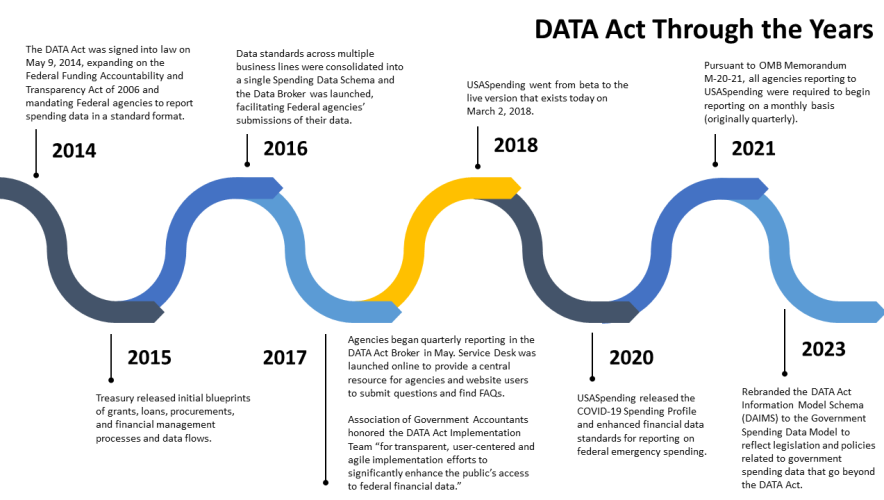The Digital Accountability and Transparency Act (DATA Act) transformed how the Federal government shares spending information with the public. When it was signed into law on May 9, 2014, the DATA Act required “the development of government-wide data standards to ensure the reporting of reliable, consistent federal spending data for public use.” A decade later, the Federal community has made significant progress toward the act’s overarching goals of tracking Federal spending more efficiently and improving government accountability and transparency.
The most visible outcomes of the DATA Act are the Governmentwide Spending Data Model (GSDM) and USAspending.gov.
Established in 2016 by the Office of Management and Budget (OMB) and the Department of the Treasury, the Governmentwide Spending Data Model (GSDM), previously known as the DATA Act Information Model Schema or DAIMS, consolidates data standards across multiple business activities of the Federal government (grants, loans, procurement, etc.). GSDM provides Federal agencies and systems such as GrantSolutions with one source for the terms, definitions, formats, and structures for hundreds of distinct data elements that tell the story of how Federal dollars are spent.
These data standards not only reduced reporting burden by providing clear meanings for data that is reused frequently across the Federal government but also paved the way for sharing the data publicly. In 2018, USASpending.gov went live as the official website of the DATA Act. The site is the answer to the DATA Act’s charge of improving how Federal spending information is accessed by and presented to the public.
In the ten years since the DATA Act was signed into law, the Federal government has continued to make it easier for stakeholders to leverage data in their decision-making. Government officials can now automate data compilation and analysis and assess agency performance more efficiently and comprehensively. Software systems can communicate across government agencies and share information about funding recipients to analyze risk more thoroughly. Moreover, the public can view breakdowns of Federal spending in their communities and better visualize the impact of government programs.



